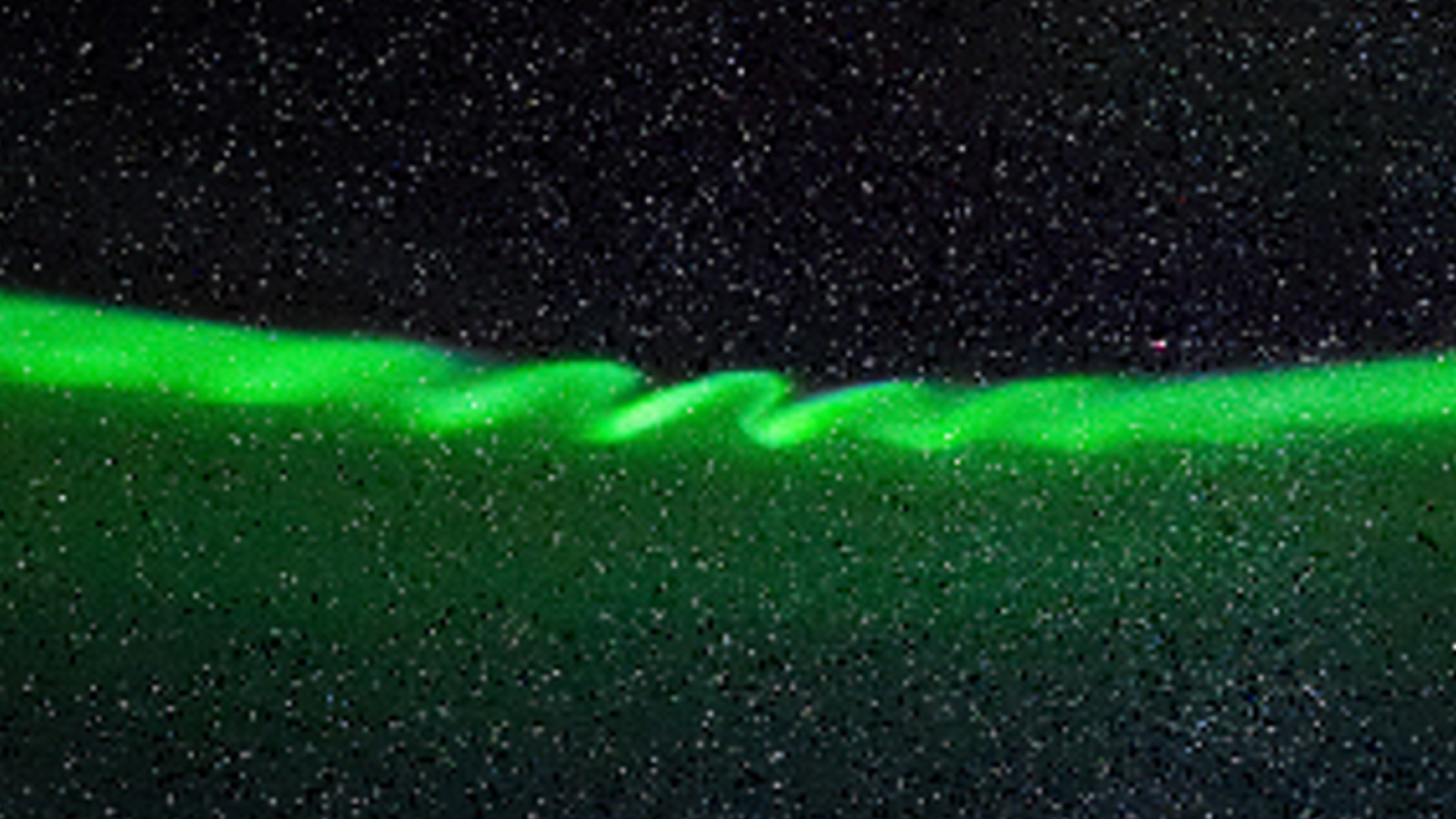Photographer snaps extremely rare 'aurora curls' after magnetic wave rings Earth's atmosphere 'like a bell'
Ethereal green "aurora curls" were photographed in the night sky over Iceland after a gust of solar wind vibrated Earth's magnetic shield like a plucked guitar string. The phenomenon is extremely rare.

A single streak of eerily-perfect, rippling green light recently wobbled through the night sky above Iceland, interrupting an otherwise typical aurora, stunning new photos show. The extremely rare phenomenon is the result of large waves vibrating in Earth's magnetic field that are triggered by solar particles slamming into our planet.
Jeff Dai, an astrophotographer and member of The World at Night (TWAN) project, spotted the zig-zagging light show above Kerid — a crater lake in south Iceland — on Jan. 16, Spaceweather.com reported. The unusual phenomenon, known as aurora curls, lasted for "several minutes" before disappearing completely, Dai wrote on Instagram.
Auroras are created when highly energetic particles from the sun bypass Earth's magnetic field, or magnetosphere, and excite molecules of gas, which give off colored light as a result. Normally, these dancing lights swirl randomly across the night sky with no definite shape or pattern.
Aurora curls are a rare, highly organized version of these lights caused by massive ripples in the magnetosphere, known as ultra-low frequency (ULF) waves. These magnetic tremors are most commonly triggered by a gust of radiation from the sun, known as solar wind, colliding with our planet's protective shield and can cause our atmosphere to "ring like a bell," according to Spaceweather.com.
Normally, ULF waves are invisible and are spotted only by scientific instruments that are honed in on Earth's upper atmosphere. But in this case, the pulsations allowed solar radiation to penetrate the magnetosphere and create a singular strip of light that took the shape of the invisible waves above.
"Imagine that Earth's magnetic field is like a guitar string," Xing-Yu Li, a ULF wave expert at Peking University in Beijing, China, told Spaceweather.com. In the new picture, "we are seeing vibrations in that string."
Related: What if Earth's magnetic field disappeared?
Get the world’s most fascinating discoveries delivered straight to your inbox.
There are several types of ULF waves, which can be split into two main groups: Pulsation irregular (Pi) waves, which have irregular wavelengths; and pulsation continuous (Pc) waves, which have a continuous wavelength.
It is not entirely clear which type of waves created the aurora curls because the magnetic tremors were not picked up by scientific equipment. Based on the images, Li estimates that the magnetic pulsations had a wavelength of around 0.6 mile (1 kilometer).
Both auroras and ULF waves are more common during periods of high solar activity.
The sun is currently on the verge of the explosive peak in its roughly 11-year solar activity cycle, known as the solar maximum. During this time, solar storms become more frequent and powerful, and our home star spits out more intense bouts of solar wind. Therefore, there is a chance we will see more aurora curls over the next few years.

Harry is a U.K.-based senior staff writer at Live Science. He studied marine biology at the University of Exeter before training to become a journalist. He covers a wide range of topics including space exploration, planetary science, space weather, climate change, animal behavior and paleontology. His recent work on the solar maximum won "best space submission" at the 2024 Aerospace Media Awards and was shortlisted in the "top scoop" category at the NCTJ Awards for Excellence in 2023. He also writes Live Science's weekly Earth from space series.

